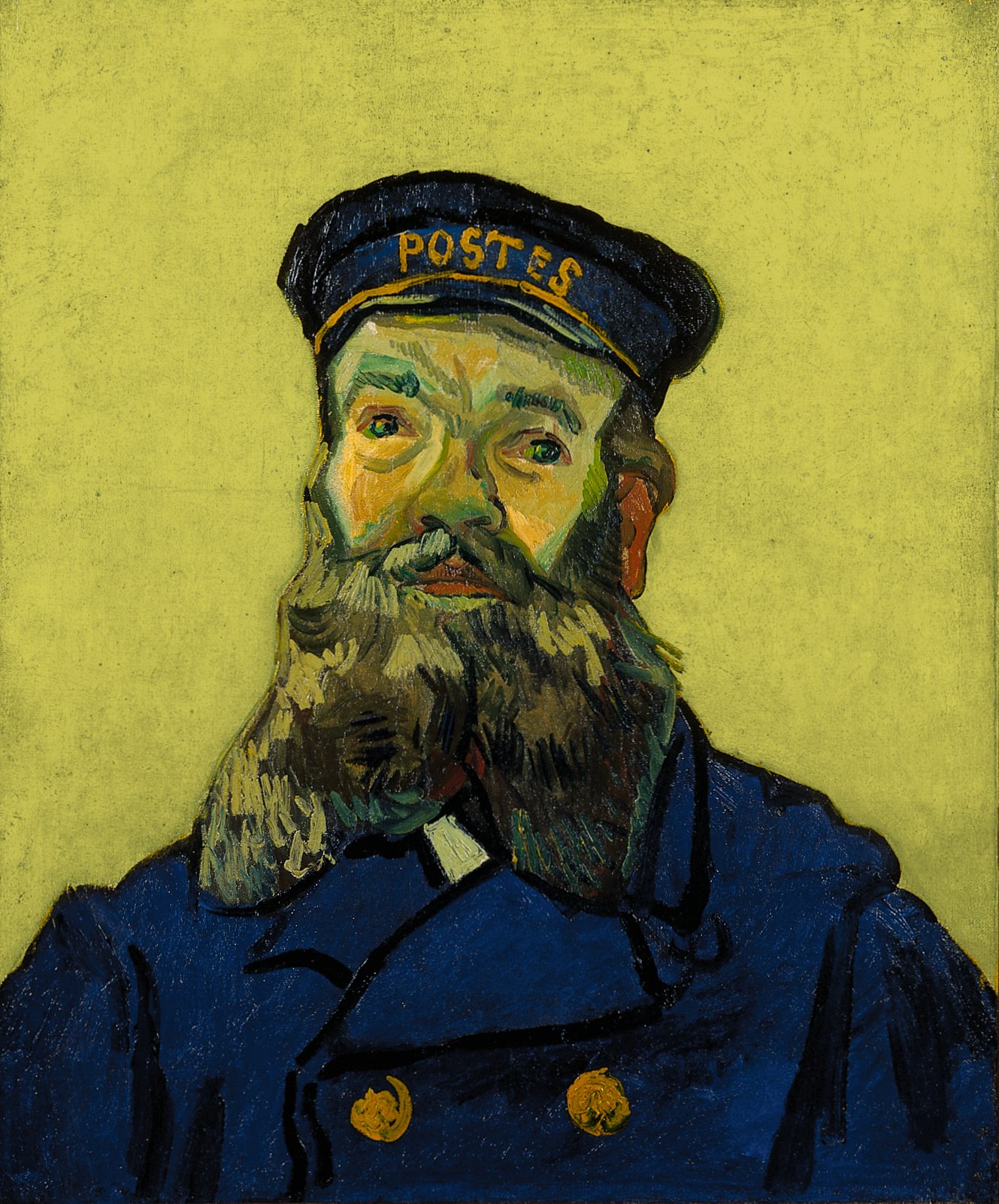Vincent van Gogh
Joseph Roulin, 1888

Vincent van Gogh
Joseph Roulin, 1888
Kunst Museum Winterthur, Schenkung der Erben von Georg Reinhart, 1955
Foto: SIK-ISEA, Zürich (Lutz Hartmann)
Van Gogh lived in Arles in Café de la Gare. It was here that he got to know the postmaster Joseph Roulin, who was a regular customer. Roulin impressed him with his political tirades, and with his head that reminded him of Socrates. Van Gogh painted this man six times and he also painted his family, Roulin’s wife and children: simple folk from the populace, elevated in a portrait. Van Gogh sought to paint his model clearly so that everybody could see what he intended to achieve.
The noticeable contrast of yellow and blue underlines this. They are unbroken colour tones applied directly to the canvas from the tube. The background is yellow, the brass buttons on the uniform yellow, the lettering on the cap shines in yellow and yellow can be found in both the face and beard. In contrast, the postmaster’s uniform is deep blue and in the beard blue and yellow mix to create shades of green. The application of the colour in the background is two-dimensional and the figure rises clearly defined out of it. It is outlined in solid black lines, which is a stylisation pertaining to Japanese woodcuts. Van Gogh had become an avid collector of these in Paris.
Both face and beard are executed with fine brushstrokes, which convey the stylisation of the figure. The liberal, intense colourfulness alongside drawn lines and surface are characteristics of van Gogh’s innovative decorative style.


